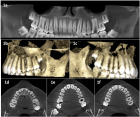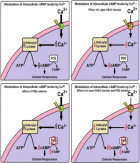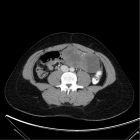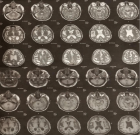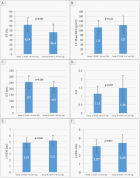About University of Calabar
University of Calabar
Articles by University of Calabar
Impact of amitriptyline on learning and memory
Published on: 14th April, 2021
OCLC Number/Unique Identifier: 9026719804
Background/aim: Amitriptyline belongs to class of known as tricycline antidepresant (TCA) that is being used to treat anxiety and depressive states. It may help improve mood and feelings of well-being, relieve anxiety and tension, help to improve sleep and increase energy level. The study investigated the effect of amitriptyline on learning and memory using eighteen (18) healthy Swiss mice of both sexes weighing 16 – 25 g.
Method: The animals were divided into three (3) groups consisting of six (6) animals each. Group 1 served as the control group, Group 2 was administered with amitriptyline at a dose of 3 mg/kg body weight dissolved in 3 mls of distilled water, and used to test for learning, while Group three was also given similar administration like Group 2, but used to test for memory. All the animals were tested for learning and memory performance using Novel object recognition task and Morris water maze test.
Results: The results obtained from the Novel object recognition task showed that there was a significant decrease (p < 0.05) in total object approach in acquisition trial of amitriptyline treated group when compared to the acquisition trial of the control group. There was a significant decrease (p < 0.05) in retention trial of amitriptyline group when compared to retention trial in the control group. There was a significant decrease (p < 0.05) in total duration exploring objects in acquisition trial of amitriptyline treated group when compared to the acquisition trial of the control group. There was a significant increase (p < 0.05) in total duration exploring objects in retention trial of amitriptyline treated group when compared to the retention trial of the control group. There was a significant decrease (p < 0.05) in the index of habituation of amitriptyline treated group when compared to the control group. The index of discrimination showed a significant increase (p < 0.05) in amitriptyline treated group when compared to the control group and a significant decrease (p < 0.05) in amitriptyline group when compared to the control group. In the Morris water maze test, Day 1 – 3 were for acquisition training, day 4 – 6 reversal training, day 7 the probe trial day and day 8 the visible platform day. During acquisition training in the Morris water maze test, there was no significant difference in Swim latencies in day 1 and 2. However in day 3, there was a significant increase (p < 0.05) in swim latency of group compared to control group and a significant decrease (p < 0.05) in swim latency of amitriptyline treated group compared to the control group. During reversal training in day 1, 2 and 3, there was no significant difference in swim latency among the three groups. Results for the retention quadrant in the probe trials showed a significant decrease (p < 0.01) in amitriptyline group when compared to the control group.
Conclusion: Results suggest that amitriptyline impairs learning and memory functions.
A study on the determination of sex using lip print patterns among indigenes of Akwa Ibom State, Nigeria
Published on: 28th January, 2022
OCLC Number/Unique Identifier: 9406521878
The lip print pattern is the characteristic pattern of the wrinkles and grooves present on the labial mucosa. This study evaluated the determination of sex among indigenes of Akwa Ibom State, Nigeria using lip print patterns. 100 subjects (50 males and 50 females), aged 18-25 years participated in the study. With written consent, lip prints were collected from the subjects. Samples were analyzed using Suzuki and Tsuchihashi classification of lip prints. The lip samples were analyzed as a whole and then divided into six portions Right Upper Portions, Middle Upper Portion, Left Upper Portion, Right Lower Portion, Middle Lower Portion and Left Lower Portion and analyzed differently. Data were analyzed using the Chi-square test and T - test analysis. The result shows that the most prevalent lip print in males considering the lip as a whole is Type I (29%) while that of the females is Type I’ (32%). In six portions, there was a significant difference (p < 0.05) between the lip print patterns in male and female subjects in the Right Upper Portion (25.960), Left Upper Portion (15.455) and Middle Left Portion (19.948) suggesting that these portions can be effectively used for sex determination among these indigenes. There was no significant difference (p > 0.05) between the thickness of lip in males and in females but, the lower lip was significantly thicker (p < 0.01) than the upper lip in both gender. Results also showed that the length of lips in males was significantly longer (p < 0.01) than that of females. This study, therefore, concludes that determination of sex among indigenes of Akwa Ibom State using lip length and lip print patterns in specific portions of Right Upper Portion, Left Upper Portion and Middle Left Portion can be effectively done.

HSPI: We're glad you're here. Please click "create a new Query" if you are a new visitor to our website and need further information from us.
If you are already a member of our network and need to keep track of any developments regarding a question you have already submitted, click "take me to my Query."






